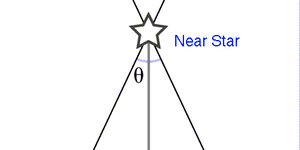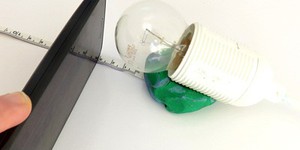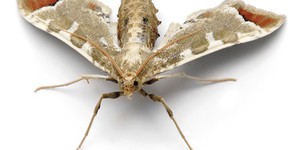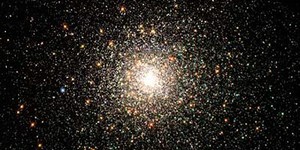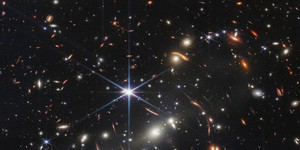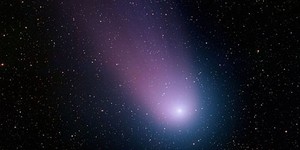Others Like “The Moon and the Stars” (top 20 results)
|
Do you enjoy going stargazing? In a good location on a clear night, you can see a huge number of stars twinkling in the night's sky. Have you ever wondered how far those stars are from us? Ancient astronomers actually discovered a way figure this out, measuring the distance from Earth to faraway stars. How did they do it without modern technologies? In this astronomy science project you will find out by exploring the link between the distance of an object and perspective (also known as…
Read more
You can measure the diameter of the Sun (and Moon) with a pinhole and a ruler! All you need to know is some simple geometry and the average distance between the Earth and Sun (or Moon). An easy way to make a pinhole is to cut a square hole (2-3 cm across) in the center of a piece of cardboard. Carefully tape a piece of aluminum foil flat over the hole. Use a sharp pin or needle to poke a tiny hole in the center of the foil. Use the pinhole to project an image of the Sun onto a wall or piece…
Read more
Some claim the Moon appears larger when near the horizon. Make a series of observations of the Moon, measuring the Moon's angular diameter each time. You should also note the Moon's altitude above the horizon, and the Moon's phase. You should do background research on the lunar orbit to determine the necessary time period. Do you find predictable variations in the Moon's diameter? Can you relate this to the Moon's changing distance from Earth? From your data, try to determine when apogee and…
Read more
Have you ever looked up at the stars at night and wondered how fast they were moving or how far away they were? By studying how the brightness of a star changes with distance, you can answer those questions. In this astronomy science project, you'll create a model of starlight and use a sensor app with your smartphone to discover the key relationship between brightness and distance.
Read more
You are coming into the house after a game of flashlight tag with your friends, but the front porch light is not on for you to see the doorknob! What is going on? Maybe your parents know that turning a light on means moths will gather there, and they do not want you letting moths inside when you open the door. You have probably noticed how moths are attracted to lights at night. They will even fly dangerously close to flames in their journey toward light. In this project, you will learn a…
Read more
Here's an astronomy project idea from Dr. James Pierce, a professor in the Astronomy Program at Minnesota State University, Mankato: "Determine the length of twilight at different times of the year by observing the time at which certain bright stars first appear and comparing with the sunset time. Beware of variations due to stars appearing at different altitudes. Try using Polaris as a standard. Also note the time at which automatic streetlights turn on. Determine how soon after sunset stars…
Read more
Would it surprise you to learn that no one knows the exact age of the universe? Astronomers have estimates, and as they gather increasingly precise data and measurements, they continue to refine those estimates to come up with more accurate estimates. In this project, you can look at data about stars in dense groups called globular clusters and come up with your own estimate for the minimum age of the universe. How closely will your estimate match those of other astronomers?
Read more
The James Webb Space Telescope (JWST) has shown us some amazing images of space, like its first "deep field" image (Figure 1). The JWST sees the universe in the infrared part of the electromagnet spectrum, which is not visible to the human eye. How, then, does it produce color images like the one in Figure 1? Scientists must colorize the images, or apply "false color." They map different bands of the infrared spectrum to colors of visible light, resulting in an image humans can view. Luckily,…
Read more
Comets—big lumps of rock, ice, and frozen gases that orbit the Sun—are among the most amazing
heavenly objects seen in the night sky. The glowing tail behind the comet's nucleus inspires wonder.
But did you know that a comet's tail is evidence that it's melting? As a comet passes by the Sun on
its orbital path, it starts to melt. But do bigger comets melt faster than smaller comets? In this
astronomy science project, you will investigate how the size of the comet affects the…
Read more
Make a pinhole projector (see Measuring the Diameter of the Sun and the Moon). Use the pinhole to project an image of the Sun onto a wall or a piece of paper. Do you notice any dark spots on the projected image? Trace the projected image and count the dark spots. Use your pinhole projector to make images of the Sun at the same time of day for several consecutive days. How does the pattern of spots change? Can you use your data to figure out how fast the Sun rotates? Sunspot activity rises…
Read more
|
Explore Our Science Videos
Cotton Ball Launcher - Fun STEM Activity
Fire Snake Experiment
Make a Lung Model – STEM activity


